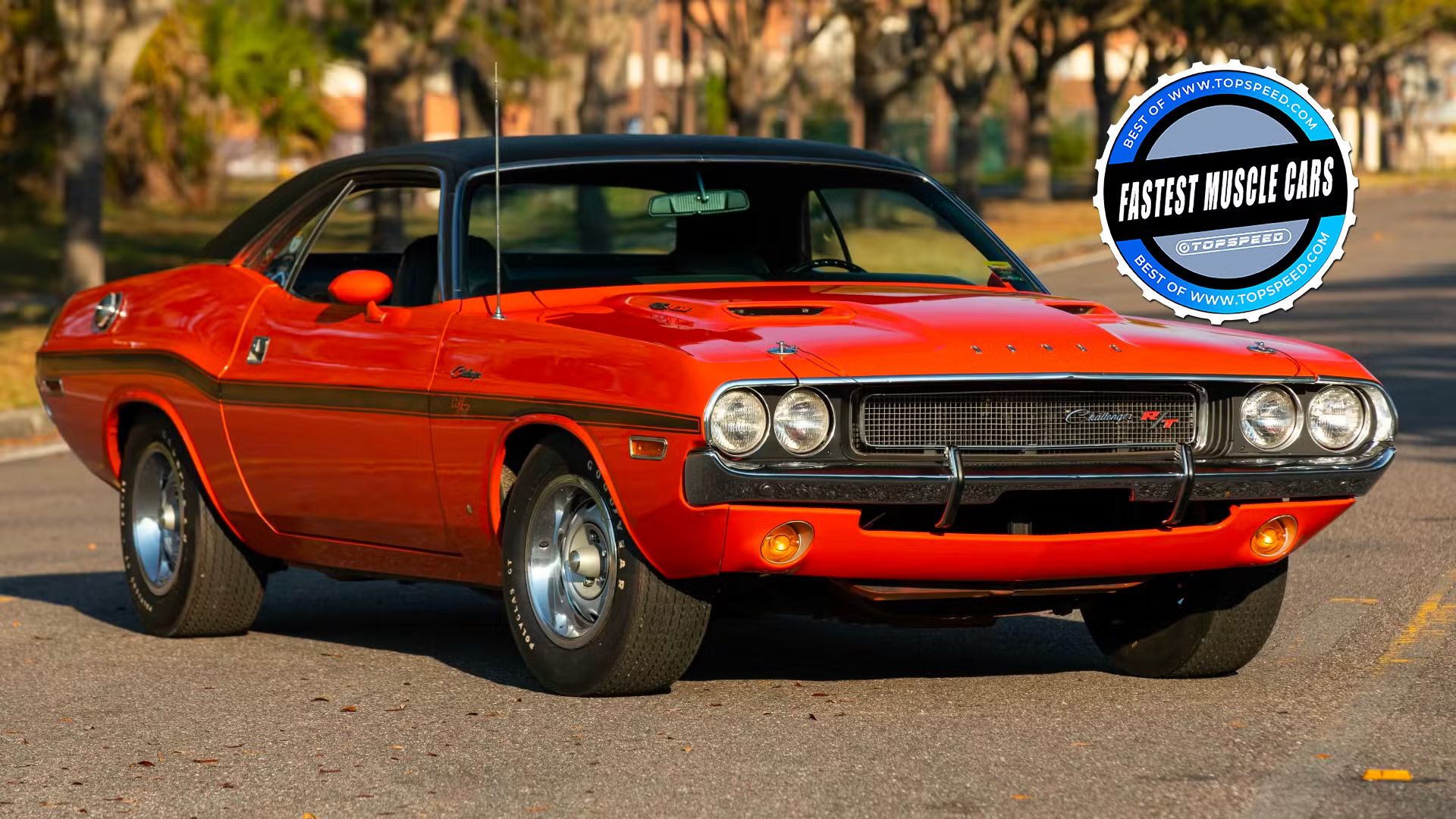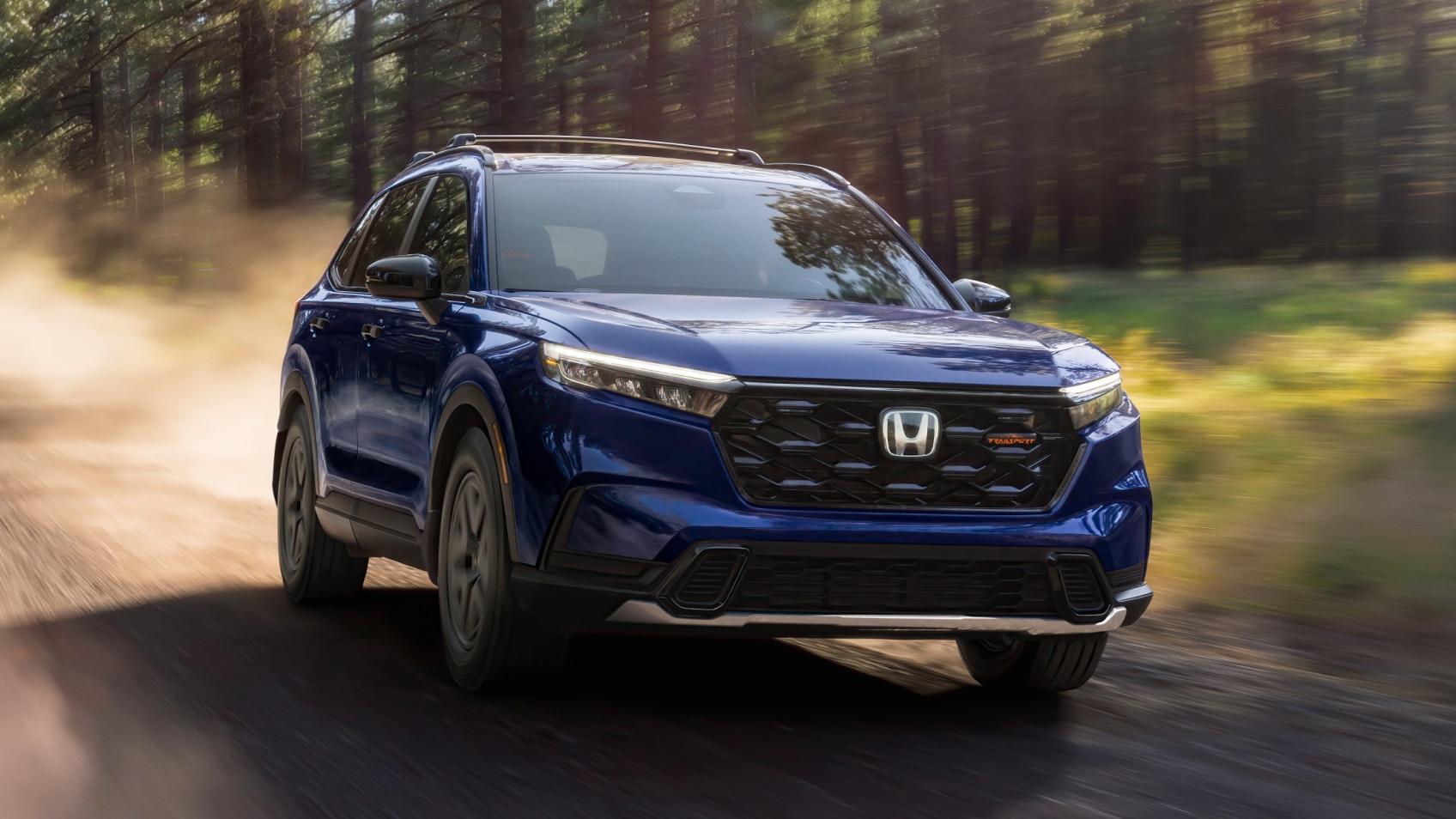
The Honda CR-V has long been lauded as a paragon of reliability and practicality, a go-to choice for families and individuals seeking a dependable compact SUV. Its reputation for comfort, fuel efficiency, and a “safe and sporty” driving experience has cemented its place as one of the best-selling SUVs globally. Every driving enthusiast is aware of the build quality and reliability that Honda vehicles typically offer, and the CR-V is often seen as no exception to this esteemed legacy.
However, even the most reputable manufacturers can encounter challenges, and the latest iteration, the 2025 Honda CR-V, is proving to be no stranger to owner concerns. Despite Honda Automobiles describing the vehicle as “ready to take on bigger challenges,” it appears that some owners are being forced to take on unexpected challenges of their own due to a growing number of reported issues. Our meticulous research, drawing from extensive NHTSA submissions, rigorous expert analysis, and valuable driver reviews, aims to provide an objective and unbiased look at the most common problems impacting this highly popular model.
This in-depth analysis will meticulously detail 12 prevalent issues that owners of the 2025 Honda CR-V have reported, providing you with the thorough and trustworthy information necessary to make an informed decision. We will examine critical areas ranging from steering difficulties to advanced safety system malfunctions, ensuring you have a clear understanding of the potential pitfalls and the practical advice needed to navigate them. It’s about empowering you, the consumer, with actionable insights directly from the experiences of other drivers and official reports, helping you navigate the complexities of modern vehicle ownership.
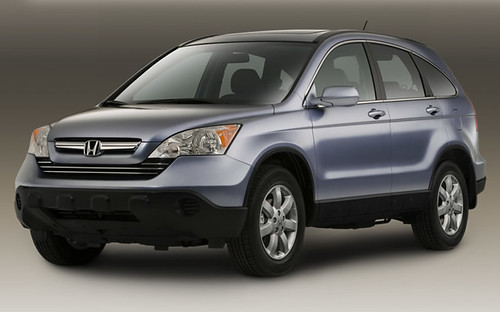
1. **Steering System Malfunctions and the “Sticky Steering” Recall**Complaints regarding the steering system top the list of concerns for the 2025 Honda CR-V, with a significant 38 problems reported specifically under this category in initial data and 40 complaints highlighted in a more recent summary. This isn’t an entirely new problem; “Steering issues that have plagued the CR-V for years aren’t going away any time soon,” as noted by reports. Owners describe an alarming “momentary increase in required steering effort,” colloquially known as “sticky steering,” which can make maintaining a straight line, particularly at higher speeds, a genuine struggle, affecting driver confidence and safety.
The severity of this problem prompted a substantial safety recall, dated October 3, 2024, affecting 1,693,199 vehicles manufactured by American Honda Motor Co., including 2023-2025 Honda CR-V models. The recall warns that the “steering gearbox assembly may have been manufactured incorrectly,” leading to “excessive internal friction and difficulty steering the vehicle.” This mechanical defect directly “increases the risk of vehicles crashing,” highlighting a critical safety concern that demands immediate attention from both the manufacturer and affected owners.
The proposed solution involves dealers replacing the worm gear spring and redistributing or adding grease as necessary, all free of charge to the owner. However, the implementation of this fix has been anything but smooth. As recently as June 4, recall repair parts were reportedly still unavailable for many affected vehicles, causing immense frustration among owners. Dealerships have sometimes offered assurances like, “It is safe to drive the vehicle and that there is no danger of the steering seizing up to cause an accident,” an assertion that many owners feel minimizes the true gravity of a safety recall.
Adding to the complexity, some owners whose vehicles exhibit all the classic symptoms of sticky steering have been informed that their Vehicle Identification Numbers (VINs) are not included in the recall. This discrepancy leaves many drivers in a precarious position, facing a recognized safety defect without official recognition or an available remedy. This ongoing issue, despite an NHTSA Office of Defects Investigation (ODI) into the “sticky steering” that closed in January 2025, continues to be a primary source of complaint for recent CR-V owners.
Car Model Information: 2016 Honda CR-V LX
Name: Honda CR-V
Caption: 2023 Honda CR-V e:HEV
Manufacturer: Honda
Aka: Honda Breeze (China, 2019–present)
Production: 1995–present
Class: Compact crossover SUV
BodyStyle: Sport utility vehicle
Layout: Front-engine, front-wheel-drive layout,Front-engine, four-wheel-drive layout
Chassis: Unibody
Predecessor: Honda Crossroad
Successor: Honda ZR-V
Categories: 2000s cars, 2010s cars, 2020s cars, All-wheel-drive vehicles, All Wikipedia articles written in British English
Summary: The Honda CR-V (also sold as the Honda Breeze in China since 2019) is a compact crossover SUV manufactured by Japanese automaker Honda since 1995. Initial models of the CR-V were built using the same platform as the Civic.
Honda began producing the CR-V in Japan and United Kingdom, for worldwide markets, adding North American manufacturing sites in the United States and Mexico in 2007, and Canada in 2012. The CR-V is also produced in Wuhan for the Chinese market by Dongfeng Honda, and also marketed as the Breeze in China for the version produced at Guangzhou by Guangqi Honda.
Honda states that “CR-V” stands for “Comfortable Runabout Vehicle,” while the term “Compact Recreational Vehicle” was used in a British car review article that was republished by Honda, associating the model name with the Sports Utility Vehicle abbreviation of SU-V.
As of 2022, the CR-V is positioned between the smaller ZR-V (marketed as HR-V in North America) — with which the CR-V shares a platform — and the larger North American market Passport/Pilot or the Chinese market Avancier/UR-V. It is currently Honda’s best-selling vehicle in the world, and the second best-selling SUV globally in 2020.
Get more information about: Honda CR-V
Buying a high-performing used car >>>
Brand: Honda Model: CR-V
Price: $15,345 Mileage: 102,036 mi.
Read more about: The Unvarnished Truth: 15 Cars That Left Owners Fuming With Performance Failures and Reliability Nightmares
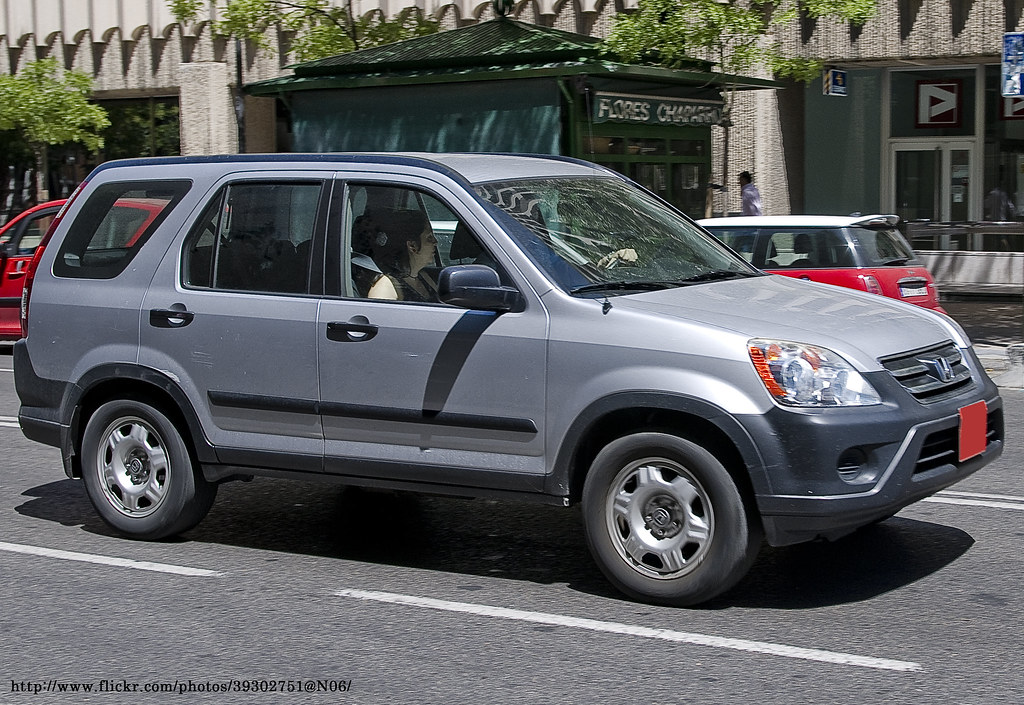
2. **Pervasive Fuel System Malfunctions and Associated Recalls**The fuel system has emerged as another significant area of concern for the 2025 Honda CR-V, accumulating 17 problems in the “Other Fuel System” category and 5 under “Gasoline Fuel System,” alongside 17 “Fuel/propulsion System” complaints. These issues are not confined solely to the Hybrid models, despite specific recalls targeting them, indicating a broader susceptibility within the CR-V lineup. The most alarming aspect of these fuel system problems is their direct link to an increased “risk of fire,” a warning explicitly stated in official recall documentation.
Two major recalls underscore the gravity of these fuel system deficiencies. The first, issued on October 14, 2024, encompassed 720,810 Honda vehicles, including the 2023-2025 Honda CR-V Hybrid. This recall addressed a high-pressure fuel pump that might “crack and leak,” posing a serious fire hazard. A second, equally critical recall followed on June 6, 2025, for a smaller subset of six 2025 Honda CR-V Hybrid vehicles, warning that “fuel feed hoses may not have been properly installed,” again creating a potential for fuel leaks and an elevated risk of fire, which demand immediate corrective action.
While there haven’t been complaints directly attributing a fire to these specific fuel system issues, a chilling complaint from November 9, 2024, reports a “brand new” 2025 Honda CR-V in Arizona, with less than 2,000 miles, that “caught fire, suddenly, for no reason” while driving on the highway. This incident, though not officially linked to the recalls, highlights the severe consequences that can arise from unforeseen vehicle malfunctions and serves as a stark reminder of the inherent dangers associated with fuel system integrity failures.
Beyond the recall-specific issues, owners have also reported other critical fuel system-related problems, such as “fuel injector failure.” Some owners struggle to have recall repairs undertaken, while others experience the issue causing “spark plug and emission problems.” One North Carolina owner recounted a terrifying experience where their CR-V “suddenly lost power and wouldn’t drive,” diagnosed as a “bad fuel injector system.” These incidents underscore how various interconnected fuel system problems can severely compromise safety and reliability, placing occupants at significant risk.
Car Model Information: 2014 Honda CR-V EX
Name: Honda CR-V
Caption: 2023 Honda CR-V e:HEV
Manufacturer: Honda
Aka: Honda Breeze (China, 2019–present)
Production: 1995–present
Class: Compact crossover SUV
BodyStyle: Sport utility vehicle
Layout: Front-engine, front-wheel-drive layout,Front-engine, four-wheel-drive layout
Chassis: Unibody
Predecessor: Honda Crossroad
Successor: Honda ZR-V
Categories: 2000s cars, 2010s cars, 2020s cars, All-wheel-drive vehicles, All Wikipedia articles written in British English
Summary: The Honda CR-V (also sold as the Honda Breeze in China since 2019) is a compact crossover SUV manufactured by Japanese automaker Honda since 1995. Initial models of the CR-V were built using the same platform as the Civic.
Honda began producing the CR-V in Japan and United Kingdom, for worldwide markets, adding North American manufacturing sites in the United States and Mexico in 2007, and Canada in 2012. The CR-V is also produced in Wuhan for the Chinese market by Dongfeng Honda, and also marketed as the Breeze in China for the version produced at Guangzhou by Guangqi Honda.
Honda states that “CR-V” stands for “Comfortable Runabout Vehicle,” while the term “Compact Recreational Vehicle” was used in a British car review article that was republished by Honda, associating the model name with the Sports Utility Vehicle abbreviation of SU-V.
As of 2022, the CR-V is positioned between the smaller ZR-V (marketed as HR-V in North America) — with which the CR-V shares a platform — and the larger North American market Passport/Pilot or the Chinese market Avancier/UR-V. It is currently Honda’s best-selling vehicle in the world, and the second best-selling SUV globally in 2020.
Get more information about: Honda CR-V
Buying a high-performing used car >>>
Brand: Honda Model: CR-V
Price: $10,510 Mileage: 153,586 mi.
Read more about: The Service Bay Staple: 14 Models That Demand Constant Attention Before 60,000 Miles Are Up
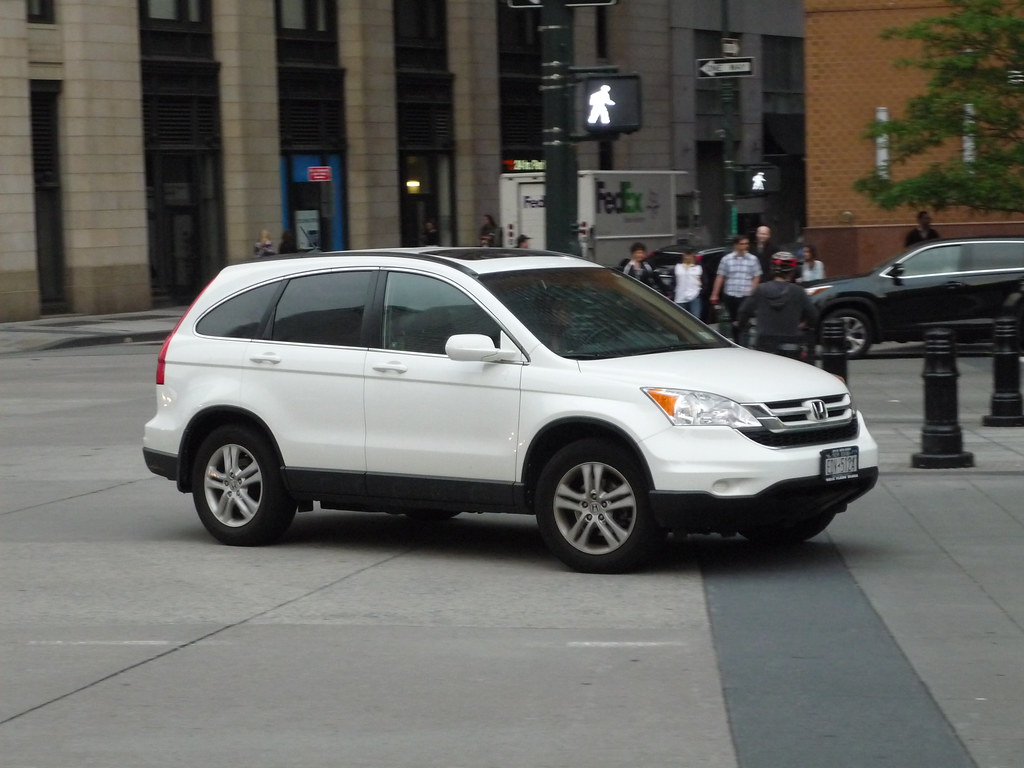
3. **Defective Forward Collision Avoidance Systems**Even though steering problems garner more complaints, the issues reported for the Forward Collision Avoidance (FCA) system are profoundly serious, with 25 total problems reported and numerous complaints explicitly mentioning crashes. These malfunctions predominantly revolve around the vehicle’s Cruise Control, Lane Keep Assist system, and the Automatic Braking System. When these systems falter, they transform from protective aids into potential hazards, often leading to unexpected and dangerous situations on the road.
One particularly concerning malfunction involves the Collision Mitigation Braking System (CMBS) causing “sudden braking even though there’s no vehicle or obstacle in front of you.” This unexpected deceleration presents a severe safety risk, especially if a vehicle is following closely behind and its driver lacks sufficient time to react. The National Highway Traffic Safety Administration (NHTSA) has launched an investigation into this pervasive issue, which is widely believed to stem from a software error, highlighting a critical flaw in the vehicle’s electronic safety architecture.
Several owners have shared harrowing accounts of crashes attributed to FCA system failures. An owner in Nevada described attempting to park, braking “four times (3 slamming the brakes),” only for the vehicle to inexplicably “not slow down or stop and eventually hit my neighbor’s wall.” Similarly, a California owner described their car continuing forward and hitting a wall “without understanding how or why.” These incidents challenge conventional driver error explanations, pointing instead to a fundamental breakdown in the vehicle’s supposed safety mechanisms.
The aftermath of such collisions can reveal further critical safety shortcomings. In the California parking incident, the owner sustained a burn on their arm from the “steering wheel where the Honda logo is located,” leaving a “visible imprint.” More critically, while “the steering wheel and right-side window airbags were activated,” the “driver’s side window airbags did not deploy,” raising serious questions about the consistency and reliability of the vehicle’s full suite of passive safety features in a collision event. This inconsistency, coupled with the “inconsistent performance of the emergency braking system, which only works sometimes,” underscores a profound lack of confidence in the vehicle’s core safety offerings.
Read more about: Unmasking the Disappearing Act: 15 Critical Car Safety Features Quietly Removed or Inconsistently Offered, Jeopardizing Your Ride

4. **Exploding Sunroofs and Spontaneous Glass Cracking**Among the more startling and less predictable issues affecting the 2025 Honda CR-V are reports of sunroofs spontaneously exploding and other glass components cracking or shattering without apparent cause. While these incidents are often categorized under “Unknown or Other” complaints, their sudden and dramatic nature makes them particularly alarming for vehicle occupants. The notion of a vehicle’s glass spontaneously failing introduces an unexpected and severe safety concern, especially when operating at highway speeds.
Several owners have recounted frightening experiences. An owner from California was driving on the freeway when their sunroof “exploded,” despite “no overpass/rocks/cars near.” The fact that their “sliding-shade was open when this happened, blowing glass debris all all over the inside of our vehicle,” underscores the immediate danger to passengers. Although, thankfully, no one was injured in this particular instance, the potential for serious harm from flying glass shards, particularly to those in the back seats, is undeniable.
Another Californian owner described hearing “a very loud booming bang like a gunshot” while driving, only to pull over and discover their sunroof was “shattered.” With “no vehicles in front of us” and no apparent external impact, the lack of an external cause points strongly to a manufacturing or material defect. The experience was described as “frightening and stressful,” shattering the owners’ belief that they had purchased “a safe and state-of-the-art car that we could safely drive.”
This issue is not isolated to sunroofs alone. Complaints also extend to other glass components, including side mirrors and the back hatch glass. An owner in Washington reported their “driver-side mirror cracked because of cold weather” just after purchasing the brand-new vehicle. Even more dramatically, an Ohio owner experienced their “back hatch” glass shattering the very day they purchased their 2025 CR-V, immediately after opening and closing it. Such instances of spontaneous glass failure on a new vehicle severely undermine confidence in its overall build quality and durability.
Car Model Information: 2014 Honda CR-V EX
Name: Honda CR-V
Caption: 2023 Honda CR-V e:HEV
Manufacturer: Honda
Aka: Honda Breeze (China, 2019–present)
Production: 1995–present
Class: Compact crossover SUV
BodyStyle: Sport utility vehicle
Layout: Front-engine, front-wheel-drive layout,Front-engine, four-wheel-drive layout
Chassis: Unibody
Predecessor: Honda Crossroad
Successor: Honda ZR-V
Categories: 2000s cars, 2010s cars, 2020s cars, All-wheel-drive vehicles, All Wikipedia articles written in British English
Summary: The Honda CR-V (also sold as the Honda Breeze in China since 2019) is a compact crossover SUV manufactured by Japanese automaker Honda since 1995. Initial models of the CR-V were built using the same platform as the Civic.
Honda began producing the CR-V in Japan and United Kingdom, for worldwide markets, adding North American manufacturing sites in the United States and Mexico in 2007, and Canada in 2012. The CR-V is also produced in Wuhan for the Chinese market by Dongfeng Honda, and also marketed as the Breeze in China for the version produced at Guangzhou by Guangqi Honda.
Honda states that “CR-V” stands for “Comfortable Runabout Vehicle,” while the term “Compact Recreational Vehicle” was used in a British car review article that was republished by Honda, associating the model name with the Sports Utility Vehicle abbreviation of SU-V.
As of 2022, the CR-V is positioned between the smaller ZR-V (marketed as HR-V in North America) — with which the CR-V shares a platform — and the larger North American market Passport/Pilot or the Chinese market Avancier/UR-V. It is currently Honda’s best-selling vehicle in the world, and the second best-selling SUV globally in 2020.
Get more information about: Honda CR-V
Buying a high-performing used car >>>
Brand: Honda Model: CR-V
Price: $10,510 Mileage: 153,586 mi.

5. **Persistent Mirror Shaking and Visibility Impairment**Beyond spontaneous cracking, another significant visibility-related problem plaguing the 2025 Honda CR-V involves persistent shaking or vibration of the driver-side mirror. This seemingly minor issue escalates into a major safety concern, as it directly impacts a driver’s ability to maintain clear situational awareness, especially at speed. Numerous complaints highlight the severity of this problem, which can compromise both safety and driver comfort, making journeys unsettling and potentially dangerous.
Owners report that the “driver’s door mirror glass vibrates excessively at highway speed,” leading to disconcerting symptoms such as “dizziness and complete lack of visibility from the mirror.” An Illinois owner noted that the mirror “gets extremely shaky when driving on the highway at a speed of more than 50 mph,” causing the image to become “distorted, which makes us dizzy while driving.” The fear expressed by owners that “the mirror will crack while driving and we’d have no way (of) seeing” underscores the profound anxiety this defect instills.
The problem’s pervasiveness is further highlighted by reports from owners who experienced the issue from the day of purchase. One owner described the mirror vibrating “terribly when traveling at 35-45 mph,” with the vibration worsening at higher speeds, making the mirror glass visibly shake. The critical safety implication is clear: “It is very dangerous at all times to not be able to see with this side mirror. It is especially dangerous on the highways because it distorts the view so greatly and also makes me feel disoriented and dizzy when I try to use it.”
Perhaps most frustratingly for owners, attempts at repair have often proven futile. In one case, a dealer “confirmed” the problem and replaced the “entire mirror unit.” However, the replacement unit “had the same defect and did the same thing.” When confronted, the dealership allegedly stated that “if they replaced it a third time, it would not make a difference,” and critically, they “also drove another CR-V just like mine off the lot and the mirror did the same thing.” This suggests a systemic manufacturing or design flaw rather than an isolated incident.
Car Model Information: 2014 Honda CR-V EX
Name: Honda CR-V
Caption: 2023 Honda CR-V e:HEV
Manufacturer: Honda
Aka: Honda Breeze (China, 2019–present)
Production: 1995–present
Class: Compact crossover SUV
BodyStyle: Sport utility vehicle
Layout: Front-engine, front-wheel-drive layout,Front-engine, four-wheel-drive layout
Chassis: Unibody
Predecessor: Honda Crossroad
Successor: Honda ZR-V
Categories: 2000s cars, 2010s cars, 2020s cars, All-wheel-drive vehicles, All Wikipedia articles written in British English
Summary: The Honda CR-V (also sold as the Honda Breeze in China since 2019) is a compact crossover SUV manufactured by Japanese automaker Honda since 1995. Initial models of the CR-V were built using the same platform as the Civic.
Honda began producing the CR-V in Japan and United Kingdom, for worldwide markets, adding North American manufacturing sites in the United States and Mexico in 2007, and Canada in 2012. The CR-V is also produced in Wuhan for the Chinese market by Dongfeng Honda, and also marketed as the Breeze in China for the version produced at Guangzhou by Guangqi Honda.
Honda states that “CR-V” stands for “Comfortable Runabout Vehicle,” while the term “Compact Recreational Vehicle” was used in a British car review article that was republished by Honda, associating the model name with the Sports Utility Vehicle abbreviation of SU-V.
As of 2022, the CR-V is positioned between the smaller ZR-V (marketed as HR-V in North America) — with which the CR-V shares a platform — and the larger North American market Passport/Pilot or the Chinese market Avancier/UR-V. It is currently Honda’s best-selling vehicle in the world, and the second best-selling SUV globally in 2020.
Get more information about: Honda CR-V
Buying a high-performing used car >>>
Brand: Honda Model: CR-V
Price: $10,510 Mileage: 153,586 mi.
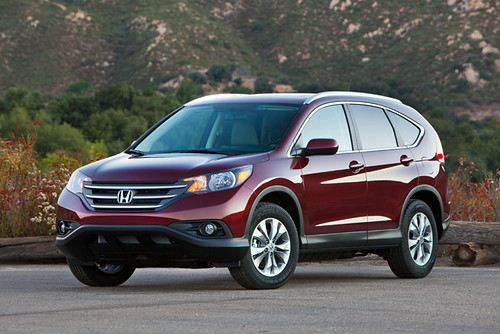
6. **Electrical System Glitches and Related Failures**Electrical issues, while often less dramatic than sudden braking or exploding glass, can be equally frustrating and, at times, safety-critical for owners of the 2025 Honda CR-V. With 11 problems reported under the “Electrical System” category and an equal number of complaints, this points to a recurring pattern of electronic malfunctions that can affect various vehicle functionalities. While the context doesn’t provide granular detail for the 2025 model’s specific electrical issues, past CR-V generations offer insights into common electrical problems that could recur.
Historically, Honda CR-V models have experienced electrical issues such as “door actuator problems” and “A/C system malfunctions.” While specific recalls for these issues, such as the 2015 recall for faulty door actuators in 2007-2009 models, point to older generations, the persistence of general “Electrical System” complaints for the 2025 model suggests that new iterations may introduce their own unique electronic challenges or that some underlying electrical architecture remains prone to issues. A faulty door actuator, for instance, could lead to “locking problems,” compromising security.
The context also alludes to broader electrical problems affecting various vehicle components, including “infotainment screens, dashboard warnings, and central locking.” Such issues can range from minor annoyances, like a flickering screen, to more serious concerns, such as erroneous warning lights that obscure genuine mechanical problems or a central locking system that fails to secure the vehicle. These seemingly disparate problems often share a common thread: reliance on a complex and sometimes fragile electrical network that needs to be robust for reliable operation.
Furthermore, some of the more severe warnings like “Critical Power Failure” or “Emissions System Failure,” though directly related to engine or fuel systems, often manifest through the vehicle’s electrical system and dashboard displays. These electronic warnings are the primary interface for drivers to understand serious underlying mechanical faults. If the electrical system itself is unreliable, the ability to accurately diagnose and respond to these critical alerts is severely hampered, adding another layer of risk and uncertainty for the driver.
Read more about: 14 Simple Ways to Troubleshoot Your Car’s Bluetooth Connection
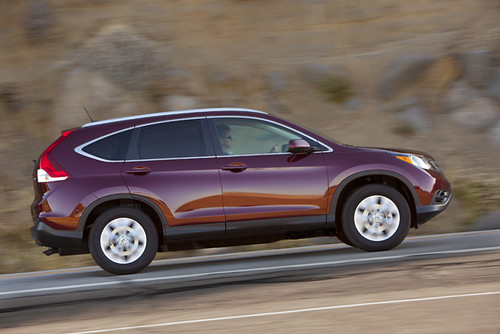
7. **Engine Performance and Emissions Challenges**Beyond immediate safety system failures, a vehicle’s fundamental engine performance and emission control are paramount for long-term reliability and environmental compliance. For the 2025 Honda CR-V, owners have lodged 13 problems under the “Engine And Engine Cooling” category and an additional 13 complaints specifically related to the “Engine.” These numbers indicate a pattern of concern regarding the very heart of the vehicle’s operation, frequently manifesting as critical dashboard warnings such as “Critical Power Failure” or “Emissions System Failure” that severely compromise drivability.
One particularly troubling issue is recurrent “fuel injector failure,” which, as reported by some owners, not only hinders engine performance but also triggers “spark plug and emission problems.” A North Carolina owner recounted a terrifying incident where their CR-V, with a brand-new vehicle, “suddenly lost power and wouldn’t drive,” with the subsequent diagnosis pointing to a “bad fuel injector system.” This type of sudden power loss, especially if it occurs on a busy highway, presents an undeniable and profound safety risk to occupants.
Another significant concern that impacts the engine’s longevity and performance is the “Oil dilution problem.” This issue, characterized by engine oil changing to a dark shade, suggests the presence of fuel in the engine oil. Such contamination compromises the oil’s vital protective and lubrication properties, potentially leading to accelerated wear of critical engine components and diminished engine health over time. While Honda has attempted to address similar issues in previous generations with ECU software updates, its reappearance raises questions about fundamental design resilience.
These engine-related problems, ranging from outright power loss to chronic oil degradation, challenge the expected robustness of a new Honda vehicle. They not only lead to significant inconvenience and potential repair costs for owners but also cast a shadow over the 2025 CR-V’s long-term reliability and its ability to deliver consistent performance, which are core expectations for any consumer.
Car Model Information: 2014 Honda CR-V EX
Name: Honda CR-V
Caption: 2023 Honda CR-V e:HEV
Manufacturer: Honda
Aka: Honda Breeze (China, 2019–present)
Production: 1995–present
Class: Compact crossover SUV
BodyStyle: Sport utility vehicle
Layout: Front-engine, front-wheel-drive layout,Front-engine, four-wheel-drive layout
Chassis: Unibody
Predecessor: Honda Crossroad
Successor: Honda ZR-V
Categories: 2000s cars, 2010s cars, 2020s cars, All-wheel-drive vehicles, All Wikipedia articles written in British English
Summary: The Honda CR-V (also sold as the Honda Breeze in China since 2019) is a compact crossover SUV manufactured by Japanese automaker Honda since 1995. Initial models of the CR-V were built using the same platform as the Civic.
Honda began producing the CR-V in Japan and United Kingdom, for worldwide markets, adding North American manufacturing sites in the United States and Mexico in 2007, and Canada in 2012. The CR-V is also produced in Wuhan for the Chinese market by Dongfeng Honda, and also marketed as the Breeze in China for the version produced at Guangzhou by Guangqi Honda.
Honda states that “CR-V” stands for “Comfortable Runabout Vehicle,” while the term “Compact Recreational Vehicle” was used in a British car review article that was republished by Honda, associating the model name with the Sports Utility Vehicle abbreviation of SU-V.
As of 2022, the CR-V is positioned between the smaller ZR-V (marketed as HR-V in North America) — with which the CR-V shares a platform — and the larger North American market Passport/Pilot or the Chinese market Avancier/UR-V. It is currently Honda’s best-selling vehicle in the world, and the second best-selling SUV globally in 2020.
Get more information about: Honda CR-V
Buying a high-performing used car >>>
Brand: Honda Model: CR-V
Price: $10,510 Mileage: 153,586 mi.
Read more about: The Complete Guide to Understanding Your Nissan Ariya’s Charging Speeds: Mastering EV Power for Every Journey
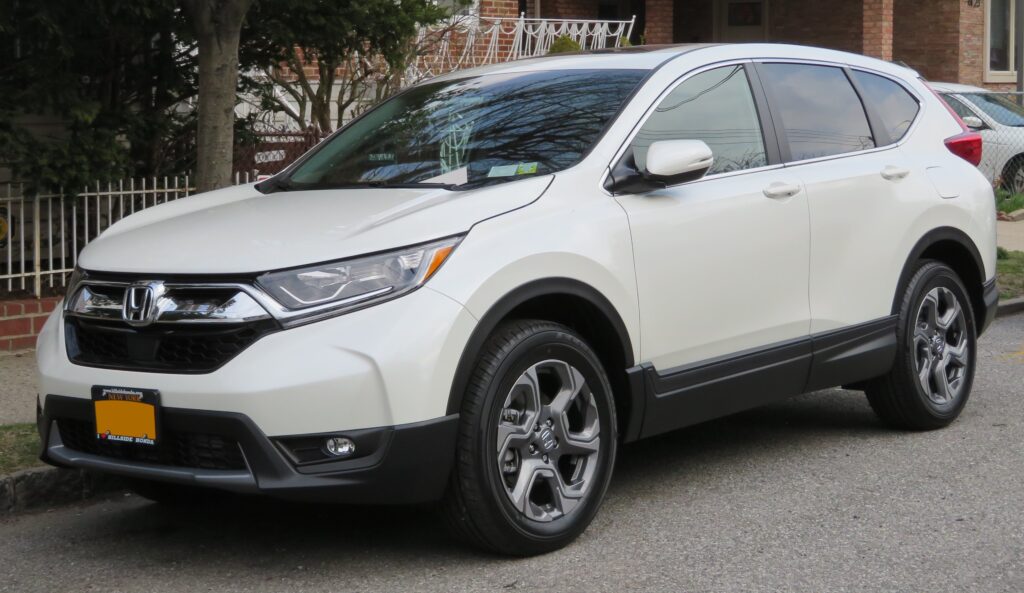
8. **Dangerous Automatic Trunk Door Sensor Failures**Convenience features, when not properly engineered for safety, can ironically become sources of serious concern. Such is the case with reports pertaining to the automatic trunk door of the 2025 Honda CR-V. While designed to offer ease of access, incidents indicate a critical flaw in its safety mechanism, directly leading to owner injury.
An owner from Virginia shared a distressing account of being struck in the head by the closing automatic trunk door while standing within its operational range in a parking garage. The impact was severe enough to cause a concussion, highlighting the immediate and undeniable physical danger posed by the system’s malfunction. This incident was particularly concerning as the owner had the keys and may have accidentally activated the close function, yet the expectation is that such a system would prevent injury.
The central issue revolves around the effectiveness of the trunk door’s safety sensor. Upon querying the dealer, the owner was informed that “there is a sensor, but it only stops once it’s made contact.” This design, which requires physical impact before halting the door’s movement, is inherently flawed and, as the owner stated, “very dangerous and should be evaluated.” It fundamentally contradicts the protective function expected from modern vehicle safety features.
This alarming design choice poses a substantial risk not only to the vehicle owner but also to family members, particularly children, who may be in proximity to the opening or closing trunk. Such a sensor failure underscores a significant oversight in design that transforms a supposedly helpful feature into a potential source of harm, demanding immediate attention for rectification to ensure the safety of all users.
Car Model Information: 2014 Honda CR-V EX
Name: Honda CR-V
Caption: 2023 Honda CR-V e:HEV
Manufacturer: Honda
Aka: Honda Breeze (China, 2019–present)
Production: 1995–present
Class: Compact crossover SUV
BodyStyle: Sport utility vehicle
Layout: Front-engine, front-wheel-drive layout,Front-engine, four-wheel-drive layout
Chassis: Unibody
Predecessor: Honda Crossroad
Successor: Honda ZR-V
Categories: 2000s cars, 2010s cars, 2020s cars, All-wheel-drive vehicles, All Wikipedia articles written in British English
Summary: The Honda CR-V (also sold as the Honda Breeze in China since 2019) is a compact crossover SUV manufactured by Japanese automaker Honda since 1995. Initial models of the CR-V were built using the same platform as the Civic.
Honda began producing the CR-V in Japan and United Kingdom, for worldwide markets, adding North American manufacturing sites in the United States and Mexico in 2007, and Canada in 2012. The CR-V is also produced in Wuhan for the Chinese market by Dongfeng Honda, and also marketed as the Breeze in China for the version produced at Guangzhou by Guangqi Honda.
Honda states that “CR-V” stands for “Comfortable Runabout Vehicle,” while the term “Compact Recreational Vehicle” was used in a British car review article that was republished by Honda, associating the model name with the Sports Utility Vehicle abbreviation of SU-V.
As of 2022, the CR-V is positioned between the smaller ZR-V (marketed as HR-V in North America) — with which the CR-V shares a platform — and the larger North American market Passport/Pilot or the Chinese market Avancier/UR-V. It is currently Honda’s best-selling vehicle in the world, and the second best-selling SUV globally in 2020.
Get more information about: Honda CR-V
Buying a high-performing used car >>>
Brand: Honda Model: CR-V
Price: $10,510 Mileage: 153,586 mi.
Read more about: The Roadblock Rundown: 12 Common Reasons Your Custom Classic Car Build Might Fail Inspection – And How to Ace It
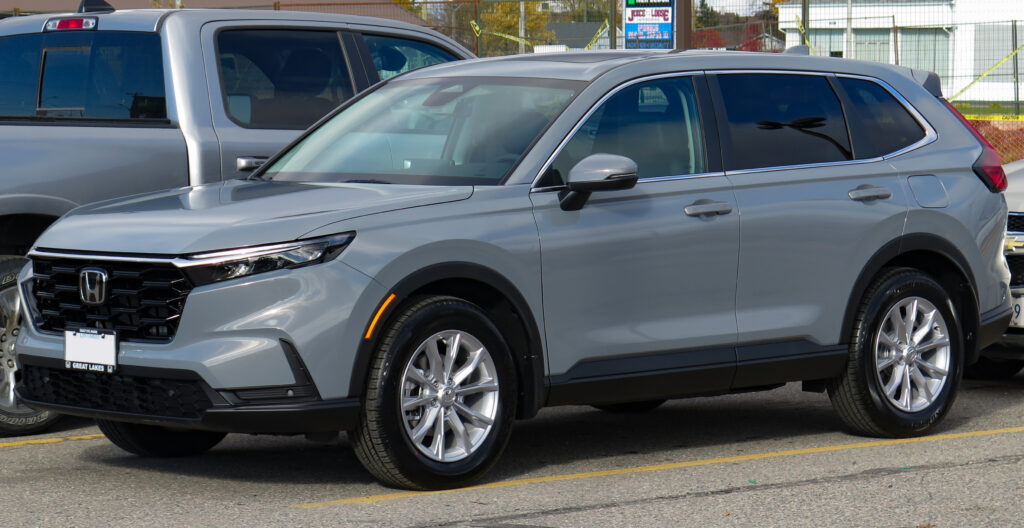
9. **Inconsistent Airbag Deployment Issues**Airbags are a cornerstone of modern vehicle safety, designed to provide crucial protection to occupants during a collision. Therefore, any report of inconsistent or failed deployment is a profound safety concern. While the 2025 Honda CR-V has only two problems listed under “Air Bag,” specific incident reports reveal a deeply troubling pattern of unreliable performance during critical moments.
The California parking incident, which saw the vehicle collide with a wall due to a Forward Collision Avoidance system malfunction, also illuminated a severe deficiency in the CR-V’s passive safety. In that crash, only “some of the airbags deployed: the steering wheel and right-side window airbags were activated.” Crucially, the “driver’s side window airbags did not deploy,” despite the severity of the impact. This selective deployment raises critical questions about the vehicle’s overall crashworthiness.
The failure of specific airbags to deploy, especially those critical for driver protection, transforms a safety system into a liability. Occupants expect a comprehensive shield in an accident, not a partial or arbitrary response. This inconsistency, coupled with the “burn on my arm was caused by the steering wheel’s Honda emblem” during the same incident, points to a multi-faceted failure in occupant protection that goes beyond simple system glitches.
For consumers, the knowledge that a vehicle’s airbags may not perform as intended during a collision is profoundly unsettling. It erodes confidence in the fundamental safety promise of the vehicle, making the CR-V a less secure option for drivers and their families who rely on these systems as a last line of defense in the event of an unavoidable accident.
Car Model Information: 2014 Honda CR-V EX
Name: Honda CR-V
Caption: 2023 Honda CR-V e:HEV
Manufacturer: Honda
Aka: Honda Breeze (China, 2019–present)
Production: 1995–present
Class: Compact crossover SUV
BodyStyle: Sport utility vehicle
Layout: Front-engine, front-wheel-drive layout,Front-engine, four-wheel-drive layout
Chassis: Unibody
Predecessor: Honda Crossroad
Successor: Honda ZR-V
Categories: 2000s cars, 2010s cars, 2020s cars, All-wheel-drive vehicles, All Wikipedia articles written in British English
Summary: The Honda CR-V (also sold as the Honda Breeze in China since 2019) is a compact crossover SUV manufactured by Japanese automaker Honda since 1995. Initial models of the CR-V were built using the same platform as the Civic.
Honda began producing the CR-V in Japan and United Kingdom, for worldwide markets, adding North American manufacturing sites in the United States and Mexico in 2007, and Canada in 2012. The CR-V is also produced in Wuhan for the Chinese market by Dongfeng Honda, and also marketed as the Breeze in China for the version produced at Guangzhou by Guangqi Honda.
Honda states that “CR-V” stands for “Comfortable Runabout Vehicle,” while the term “Compact Recreational Vehicle” was used in a British car review article that was republished by Honda, associating the model name with the Sports Utility Vehicle abbreviation of SU-V.
As of 2022, the CR-V is positioned between the smaller ZR-V (marketed as HR-V in North America) — with which the CR-V shares a platform — and the larger North American market Passport/Pilot or the Chinese market Avancier/UR-V. It is currently Honda’s best-selling vehicle in the world, and the second best-selling SUV globally in 2020.
Get more information about: Honda CR-V
Buying a high-performing used car >>>
Brand: Honda Model: CR-V
Price: $10,510 Mileage: 153,586 mi.
Read more about: Navigating the Market: The 10 Most Important Safety Features to Look for in Your Next Used Car
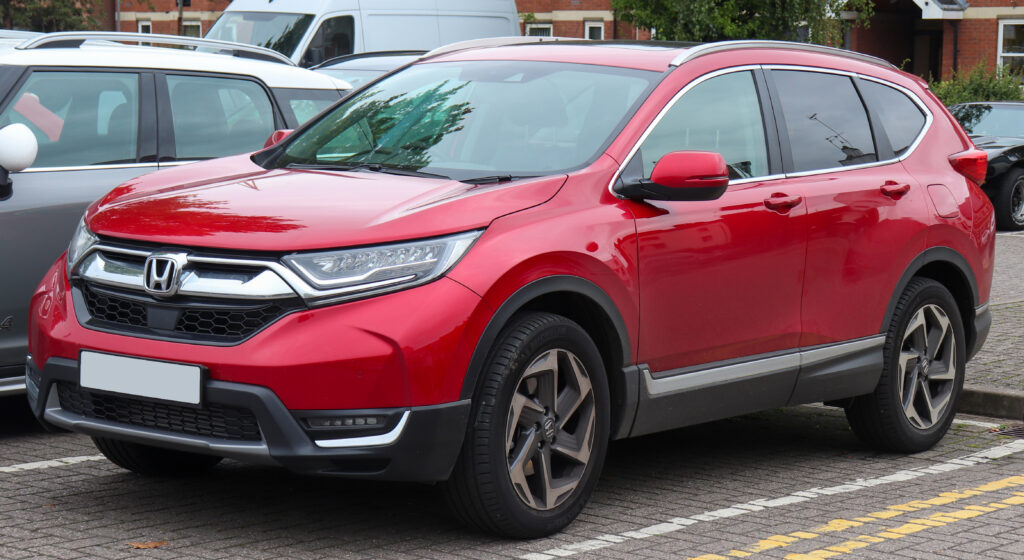
10. **General Service Brake Complaints**Among the most critical systems in any vehicle, the service brakes are indispensable for safety, control, and accident prevention. For the 2025 Honda CR-V, our analysis reveals 14 reported problems under the “Service Brakes” category and 16 complaints in the “Service Brakes” summary. While specific details outlining the nature of these complaints are not extensively provided in the context, the sheer volume of reports indicates a concerning trend regarding this vital safety component.
Any issue relating to a vehicle’s service brakes demands immediate and thorough investigation. Malfunctions can range from diminished stopping power and unexpected noises to premature wear or complete failure, all of which compromise a driver’s ability to safely operate the vehicle. Even subtle inconsistencies in brake pedal feel or responsiveness can significantly impact driver confidence and reaction time, particularly in emergency situations.
The presence of numerous “Service Brakes” complaints for a new model year like the 2025 CR-V contradicts the expectation of flawless performance in a new vehicle, especially one from a manufacturer lauded for its reliability. These complaints suggest potential underlying issues, whether in component quality, system calibration, or overall design, that could affect the vehicle’s ability to consistently and effectively bring it to a stop.
For consumers considering the 2025 Honda CR-V, these reported brake problems are a serious red flag. Reliable braking is non-negotiable for safety, and the documented complaints underscore the importance of ensuring that any potential purchase undergoes rigorous inspection, and that owners remain vigilant for any anomalies in brake performance, addressing them promptly with certified technicians.
Car Model Information: 2014 Honda CR-V EX
Name: Honda CR-V
Caption: 2023 Honda CR-V e:HEV
Manufacturer: Honda
Aka: Honda Breeze (China, 2019–present)
Production: 1995–present
Class: Compact crossover SUV
BodyStyle: Sport utility vehicle
Layout: Front-engine, front-wheel-drive layout,Front-engine, four-wheel-drive layout
Chassis: Unibody
Predecessor: Honda Crossroad
Successor: Honda ZR-V
Categories: 2000s cars, 2010s cars, 2020s cars, All-wheel-drive vehicles, All Wikipedia articles written in British English
Summary: The Honda CR-V (also sold as the Honda Breeze in China since 2019) is a compact crossover SUV manufactured by Japanese automaker Honda since 1995. Initial models of the CR-V were built using the same platform as the Civic.
Honda began producing the CR-V in Japan and United Kingdom, for worldwide markets, adding North American manufacturing sites in the United States and Mexico in 2007, and Canada in 2012. The CR-V is also produced in Wuhan for the Chinese market by Dongfeng Honda, and also marketed as the Breeze in China for the version produced at Guangzhou by Guangqi Honda.
Honda states that “CR-V” stands for “Comfortable Runabout Vehicle,” while the term “Compact Recreational Vehicle” was used in a British car review article that was republished by Honda, associating the model name with the Sports Utility Vehicle abbreviation of SU-V.
As of 2022, the CR-V is positioned between the smaller ZR-V (marketed as HR-V in North America) — with which the CR-V shares a platform — and the larger North American market Passport/Pilot or the Chinese market Avancier/UR-V. It is currently Honda’s best-selling vehicle in the world, and the second best-selling SUV globally in 2020.
Get more information about: Honda CR-V
Buying a high-performing used car >>>
Brand: Honda Model: CR-V
Price: $10,510 Mileage: 153,586 mi.
Read more about: Empower Your Auto Repairs: 14 Essential Questions to Ask Your Mechanic for Confidence and Savings

11. **Persistent General Visibility and Wiper System Problems**Clear and unimpaired visibility is a foundational element of safe driving, directly impacting a driver’s ability to perceive hazards and navigate changing road conditions. For the 2025 Honda CR-V, the category of “Visibility” has accumulated 21 reported problems, with “Visibility/wiper” receiving 20 complaints. While specific issues like exploding glass and persistent mirror shaking have been detailed, these broad categories suggest an overarching pattern of concern regarding how drivers perceive their surroundings in this model.
Although granular details on specific wiper system failures are not extensively itemized within the provided data, the recurring inclusion of “Visibility/wiper” in complaint summaries points to a broader spectrum of issues that could hinder a driver’s view. These might include inadequate wiper effectiveness, premature wear, or issues with defrosting and defogging systems that, while seemingly minor, become critical in adverse weather conditions or during night driving.
The collective weight of these visibility complaints highlights that drivers are facing more than isolated incidents; there is a persistent challenge in maintaining an optimal field of vision. Whether it stems from persistent distortions not covered by specific mirror issues, or other factors affecting the clarity of the windshield or side windows, compromised visibility places drivers and passengers at increased risk by reducing reaction time and increasing the likelihood of accidents.
For consumers, an informed decision requires understanding that despite advancements in vehicle technology, fundamental aspects like visibility continue to be a source of frustration and potential danger in the 2025 CR-V. Honda must address these overarching visibility concerns comprehensively, ensuring drivers have the clear sightlines necessary for safe and confident operation under all conditions.
Car Model Information: 2014 Honda CR-V EX
Name: Honda CR-V
Caption: 2023 Honda CR-V e:HEV
Manufacturer: Honda
Aka: Honda Breeze (China, 2019–present)
Production: 1995–present
Class: Compact crossover SUV
BodyStyle: Sport utility vehicle
Layout: Front-engine, front-wheel-drive layout,Front-engine, four-wheel-drive layout
Chassis: Unibody
Predecessor: Honda Crossroad
Successor: Honda ZR-V
Categories: 2000s cars, 2010s cars, 2020s cars, All-wheel-drive vehicles, All Wikipedia articles written in British English
Summary: The Honda CR-V (also sold as the Honda Breeze in China since 2019) is a compact crossover SUV manufactured by Japanese automaker Honda since 1995. Initial models of the CR-V were built using the same platform as the Civic.
Honda began producing the CR-V in Japan and United Kingdom, for worldwide markets, adding North American manufacturing sites in the United States and Mexico in 2007, and Canada in 2012. The CR-V is also produced in Wuhan for the Chinese market by Dongfeng Honda, and also marketed as the Breeze in China for the version produced at Guangzhou by Guangqi Honda.
Honda states that “CR-V” stands for “Comfortable Runabout Vehicle,” while the term “Compact Recreational Vehicle” was used in a British car review article that was republished by Honda, associating the model name with the Sports Utility Vehicle abbreviation of SU-V.
As of 2022, the CR-V is positioned between the smaller ZR-V (marketed as HR-V in North America) — with which the CR-V shares a platform — and the larger North American market Passport/Pilot or the Chinese market Avancier/UR-V. It is currently Honda’s best-selling vehicle in the world, and the second best-selling SUV globally in 2020.
Get more information about: Honda CR-V
Buying a high-performing used car >>>
Brand: Honda Model: CR-V
Price: $10,510 Mileage: 153,586 mi.
Read more about: The Roadblock Rundown: 12 Common Reasons Your Custom Classic Car Build Might Fail Inspection – And How to Ace It
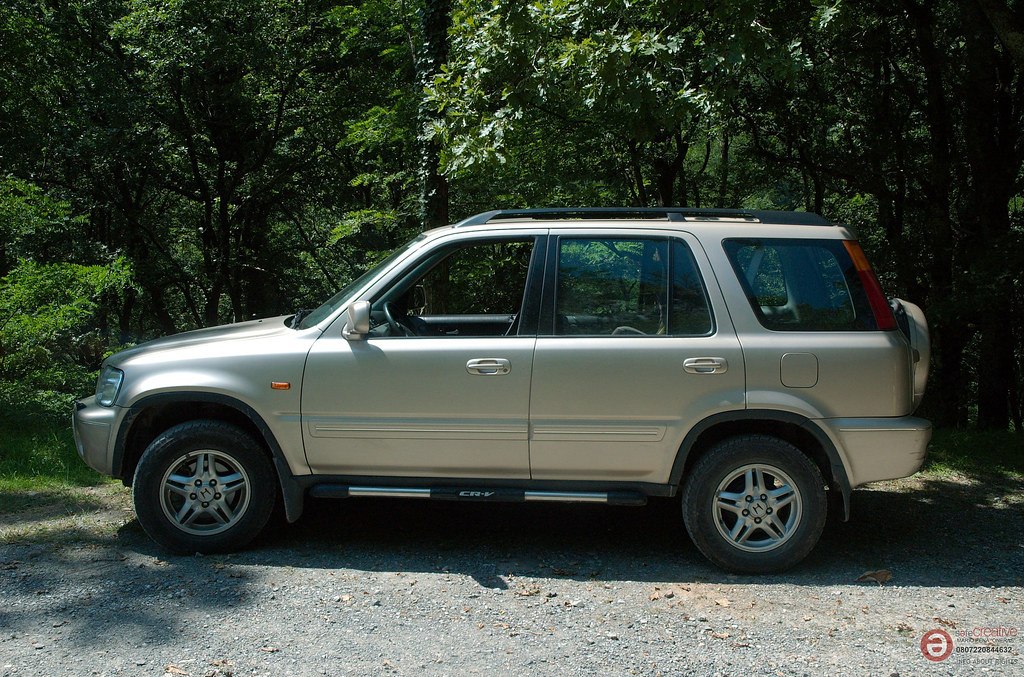
12. **Range of Miscellaneous Equipment Malfunctions**The “Equipment” category stands out as the second most common source of complaints for the 2025 Honda CR-V, with a significant 32 problems reported. This broad classification, often supplemented by “Unknown Or Other” complaints, signifies a wide array of miscellaneous malfunctions that, while not fitting into more specific categories like steering or brakes, collectively point to inconsistencies in overall vehicle quality and manufacturing processes.
These equipment malfunctions can encompass anything from minor annoyances to functionally disruptive failures. Although specific details for each of the 32 reported problems are not provided, typical issues in this category for modern vehicles can involve interior trim, seats, infotainment system components not related to electrical glitches (e.g., physical buttons, connectivity issues), or other non-drivetrain elements that simply fail to operate as intended. Such problems, regardless of their nature, detract significantly from the ownership experience.
The high number of “Equipment” problems suggests a lack of consistent quality control across various vehicle components. While individual failures might appear isolated, their cumulative frequency indicates a broader susceptibility to defects that undermine the perception of a well-built and reliable vehicle. Owners expect all features in a new car to function flawlessly, and a litany of miscellaneous malfunctions erodes that expectation and trust.
Ultimately, this category serves as a clear indicator that the 2025 Honda CR-V is grappling with more than just a few isolated flaws; it faces a diverse set of quality control challenges. These issues, while varied, collectively signal that consumers should approach the latest CR-V with caution, being mindful that unexpected malfunctions across different parts of the vehicle could lead to frustration and unforeseen repair needs, diminishing the overall value proposition of this popular SUV.
Car Model Information: 2014 Honda CR-V EX
Name: Honda CR-V
Caption: 2023 Honda CR-V e:HEV
Manufacturer: Honda
Aka: Honda Breeze (China, 2019–present)
Production: 1995–present
Class: Compact crossover SUV
BodyStyle: Sport utility vehicle
Layout: Front-engine, front-wheel-drive layout,Front-engine, four-wheel-drive layout
Chassis: Unibody
Predecessor: Honda Crossroad
Successor: Honda ZR-V
Categories: 2000s cars, 2010s cars, 2020s cars, All-wheel-drive vehicles, All Wikipedia articles written in British English
Summary: The Honda CR-V (also sold as the Honda Breeze in China since 2019) is a compact crossover SUV manufactured by Japanese automaker Honda since 1995. Initial models of the CR-V were built using the same platform as the Civic.
Honda began producing the CR-V in Japan and United Kingdom, for worldwide markets, adding North American manufacturing sites in the United States and Mexico in 2007, and Canada in 2012. The CR-V is also produced in Wuhan for the Chinese market by Dongfeng Honda, and also marketed as the Breeze in China for the version produced at Guangzhou by Guangqi Honda.
Honda states that “CR-V” stands for “Comfortable Runabout Vehicle,” while the term “Compact Recreational Vehicle” was used in a British car review article that was republished by Honda, associating the model name with the Sports Utility Vehicle abbreviation of SU-V.
As of 2022, the CR-V is positioned between the smaller ZR-V (marketed as HR-V in North America) — with which the CR-V shares a platform — and the larger North American market Passport/Pilot or the Chinese market Avancier/UR-V. It is currently Honda’s best-selling vehicle in the world, and the second best-selling SUV globally in 2020.
Get more information about: Honda CR-V
Buying a high-performing used car >>>
Brand: Honda Model: CR-V
Price: $10,510 Mileage: 153,586 mi.
Read more about: Power Up Your Ride: A DIY Guide to Installing a Level 2 EV Charger at Home
Our comprehensive analysis of the 2025 Honda CR-V reveals a concerning landscape of reliability issues that challenge Honda’s long-standing reputation for quality. From critical safety failures in steering, fuel systems, and automatic braking to alarming instances of exploding glass and inconsistent airbag deployment, and a pervasive array of electrical and miscellaneous equipment malfunctions, the latest CR-V is exhibiting vulnerabilities that demand serious attention. While no vehicle is entirely problem-free, the documented frequency and severity of these issues suggest that the 2025 model year falls short of the high standards consumers have come to expect from Honda. Prospective buyers are urged to proceed with a heightened sense of awareness, meticulously researching specific VINs for recall compliance and considering these widespread reports to make a truly informed purchasing decision that prioritizes safety, reliability, and peace of mind.



